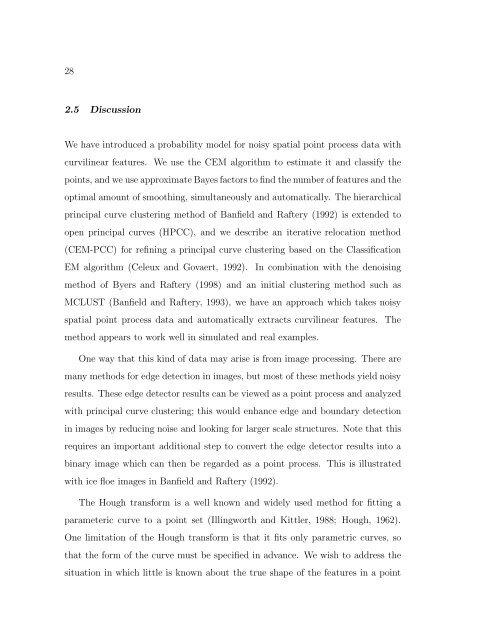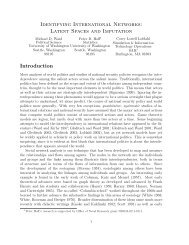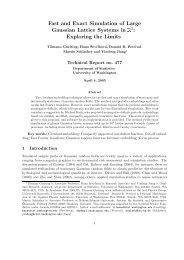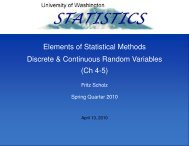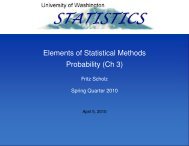View - Statistics - University of Washington
View - Statistics - University of Washington
View - Statistics - University of Washington
You also want an ePaper? Increase the reach of your titles
YUMPU automatically turns print PDFs into web optimized ePapers that Google loves.
282.5 DiscussionWe have introduced a probability model for noisy spatial point process data withcurvilinear features. We use the CEM algorithm to estimate it and classify thepoints, and we use approximate Bayes factors to find the number <strong>of</strong> features and theoptimal amount <strong>of</strong> smoothing, simultaneously and automatically. The hierarchicalprincipal curve clustering method <strong>of</strong> Banfield and Raftery (1992) is extended toopen principal curves (HPCC), and we describe an iterative relocation method(CEM-PCC) for refining a principal curve clustering based on the ClassificationEM algorithm (Celeux and Govaert, 1992). In combination with the denoisingmethod <strong>of</strong> Byers and Raftery (1998) and an initial clustering method such asMCLUST (Banfield and Raftery, 1993), we have an approach which takes noisyspatial point process data and automatically extracts curvilinear features. Themethod appears to work well in simulated and real examples.One way that this kind <strong>of</strong> data may arise is from image processing. There aremany methods for edge detection in images, but most <strong>of</strong> these methods yield noisyresults. These edge detector results can be viewed as a point process and analyzedwith principal curve clustering; this would enhance edge and boundary detectionin images by reducing noise and looking for larger scale structures. Note that thisrequires an important additional step to convert the edge detector results into abinary image which can then be regarded as a point process. This is illustratedwith ice floe images in Banfield and Raftery (1992).The Hough transform is a well known and widely used method for fitting aparameteric curve to a point set (Illingworth and Kittler, 1988; Hough, 1962).One limitation <strong>of</strong> the Hough transform is that it fits only parametric curves, sothat the form <strong>of</strong> the curve must be specified in advance. We wish to address thesituation in which little is known about the true shape <strong>of</strong> the features in a point


